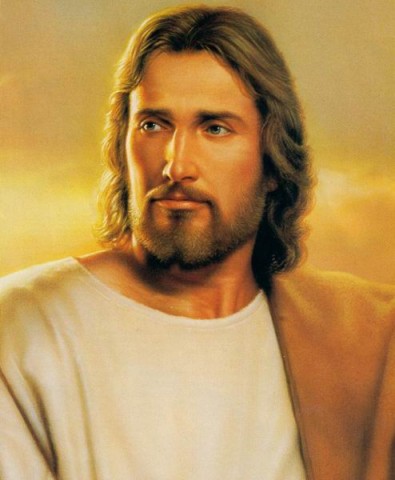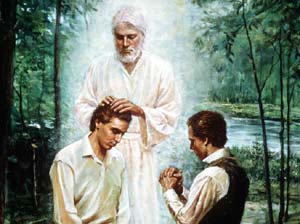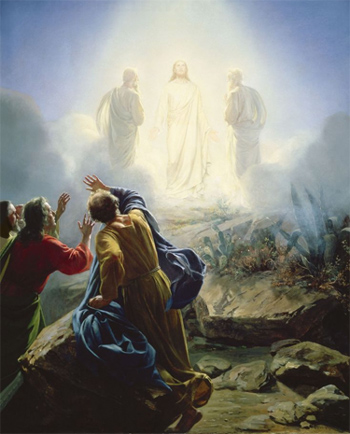In Matthew 15:21–39 Jesus heals the daughter of a Gentile woman, heals the many who came unto Him with their infirmities and feeds 4000 from just seven loaves of bread and a few fishes.
 When the Gentile woman came pleading to Jesus to heal her daughter, Jesus was near Tyre and Sidon in what is now Lebanon. At first Jesus seemed to ignore her, then told her He was called only to teach the Children of Israel. His insult, “It is not meet to take the children’s bread and to cast it to dogs” did not put an end to the woman’s pursuit of Him and His grace, but instead gave her an opportunity to show her stalwart faith. She replied, “Truth Lord: yet the dogs eat of the crumbs which fall from their master’s table” (vs 26, 27). Responding to her proof of faith, the Lord grants her wish and sends her home to a healed child.
When the Gentile woman came pleading to Jesus to heal her daughter, Jesus was near Tyre and Sidon in what is now Lebanon. At first Jesus seemed to ignore her, then told her He was called only to teach the Children of Israel. His insult, “It is not meet to take the children’s bread and to cast it to dogs” did not put an end to the woman’s pursuit of Him and His grace, but instead gave her an opportunity to show her stalwart faith. She replied, “Truth Lord: yet the dogs eat of the crumbs which fall from their master’s table” (vs 26, 27). Responding to her proof of faith, the Lord grants her wish and sends her home to a healed child.
The Savior then departed for the Sea of Galilee, traveling through Decapolis (Mark 7:31). Decapolis was an area east of the Sea of Galilee where many Gentiles lived. Crowds gathered unto Jesus hoping to be healed. Jesus did heal them, and they stayed in His presence for three days, even going without food. Many of these Gentiles may have been converted from this experience, but they would not be welcomed in full fellowship as Christians until after Christ’s crucifixion and resurrection — not until the revelation to Peter to take the gospel to the Gentiles. Jesus had already fed the 5,000, but this time, He miraculously fed 4,000, most of whom were Gentiles. “With the later feeding of the 4,000, Jesus was symbolically teaching that in the future, living bread would be offered to the Gentile nations.
This situation perfectly parallels Christ’s Church in the last dispensation of time in which we live. Many people of Black African descent had joined The Church of Jesus Christ of Latter-day Saints, knowing that the priesthood was being withheld pending a revelation that would change church policy. Members prayed mightily for that day to come. When it did arrive, and the revelation was received, there was great rejoicing, and an increase of Black African membership.
Peter is Promised the Keys of the Kingdom
In Matthew 16:13–19 we find the basis for orthodox Christianity’s claim to apostolic authority from Christ. Jesus asks Peter, “Whom do you say I am.” Peter answers that Jesus is the Christ, Son of the Living God. Jesus answers, “..for flesh and blood hath not revealed it unto thee, but my Father which is in heaven. And I say also unto thee, thou art Peter, and upon this rock I will build my church….”
Modern prophets and further revealed scripture have clarified that Peter is not the rock upon which the church is built. The Prophet Joseph Smith taught that the rock Jesus referred to is revelation (Teachings of the Prophet Joseph Smith, sel. Joseph Fielding Smith [1976], 274).
 The Savior then promised to give Peter the keys of the kingdom, that whatever Peter performed on earth would be ratified in heaven. These keys are held by the person at the head of God’s true church in every dispensation of time. They are currently held (2012) by President and Prophet Thomas S. Monson. These keys were lost for a time during a period of general falling away and the withholding of revelation to the church as a body. This resulted in a proliferation of hundreds of Christian sects. The keys were returned to the earth when Peter, James, and John (with Peter and James as resurrected messengers, and John as a translated being) conferred the keys upon Joseph Smith, the first prophet of the last dispensation of time before the Second Coming of Jesus Christ. Therefore, apostolic authority has been fully restored in the last days for the building up of the kingdom of God on earth.
The Savior then promised to give Peter the keys of the kingdom, that whatever Peter performed on earth would be ratified in heaven. These keys are held by the person at the head of God’s true church in every dispensation of time. They are currently held (2012) by President and Prophet Thomas S. Monson. These keys were lost for a time during a period of general falling away and the withholding of revelation to the church as a body. This resulted in a proliferation of hundreds of Christian sects. The keys were returned to the earth when Peter, James, and John (with Peter and James as resurrected messengers, and John as a translated being) conferred the keys upon Joseph Smith, the first prophet of the last dispensation of time before the Second Coming of Jesus Christ. Therefore, apostolic authority has been fully restored in the last days for the building up of the kingdom of God on earth.
“The Priesthood in general is the authority given to man to act for God. Every man ordained to any degree of the Priesthood, has this authority delegated to him.
“But it is necessary that every act performed under this authority shall be done at the proper time and place, in the proper way, and after the proper order. The power of directing these labors constitutes the keys of the Priesthood. In their fulness, the keys are held by only one person at a time, the prophet and president of the Church. He may delegate any portion of this power to another, in which case that person holds the keys of that particular labor” (Gospel Doctrine, 5th ed. [1939], 136).
Jesus is Transfigured before Peter, James and John
 In Matthew 17:1–9 we see the record of a marvelous event. The Lord Jesus Christ is transfigured before Peter, James, and John. Through modern revelation we have been informed that a more detailed record of this event exists, but that it has not yet been entrusted to men.
In Matthew 17:1–9 we see the record of a marvelous event. The Lord Jesus Christ is transfigured before Peter, James, and John. Through modern revelation we have been informed that a more detailed record of this event exists, but that it has not yet been entrusted to men.
Three things happened during this event, at least from what we have in the biblical record:
- Jesus’ face shone like the sun, and his clothing became brilliantly white.
- Moses and Elias (Elijah) appeared.
- “A bright cloud overshadowed them,” and they heard the voice of the Father bearing witness of his Son.
Note that Elijah was a translated being, since no one had been resurrected yet. From modern revelation we learn the following
- Peter, James, and John saw a vision of the transfiguration of the earth at the Savior’s Second Coming (D&C 63:20–21)
- They were “transfigured before [Christ]” (Teachings of the Prophet Joseph Smith, 158)
- They were taught about the Savior’s death and resurrection (Joseph Smith Translation, Luke 9:31)
- They received from Jesus, Moses, and Elijah the priesthood keys they would need to govern the Church after the Savior’s death (Teachings of the Prophet Joseph Smith, 158; Joseph Fielding Smith, Doctrines of Salvation, 3 vols. [1954–56], 2:110).
In 1836 Moses and Elijah returned again to the earth. They laid their hands on Joseph Smith and Oliver Cowdery to restore the same keys given to Peter, James, and John. (See Doctrine and Covenants, Section 110.)
Speaking of the transfiguration of Christ, Elder David B. Haight said,
“Perhaps Jesus felt not only a sense of the heavenly calm which that solitary opportunity for communion with His Father would bring, but even more, a sense that He would be supported in the coming hour by ministrations not of this earth. … As He prayed to His Father, He was elevated far above the doubt and wickedness of the world which had rejected Him.
“He took His three apostles with Him in the belief that they, after having seen His glory … might be fortified, that their faith might be strengthened to prepare them for the insults and humiliating events which were to follow.
“The three chosen apostles were taught of [the Savior’s] coming death and also His resurrection, teachings that would strengthen each of them in the eventful days ahead.”
Source:
Some of the material used for this article was adapted from the New Testament Sunday School Manual of The Church of Jesus Christ of Latter-day Saints.
http://youtu.be/9vmqrn0K5Jc
